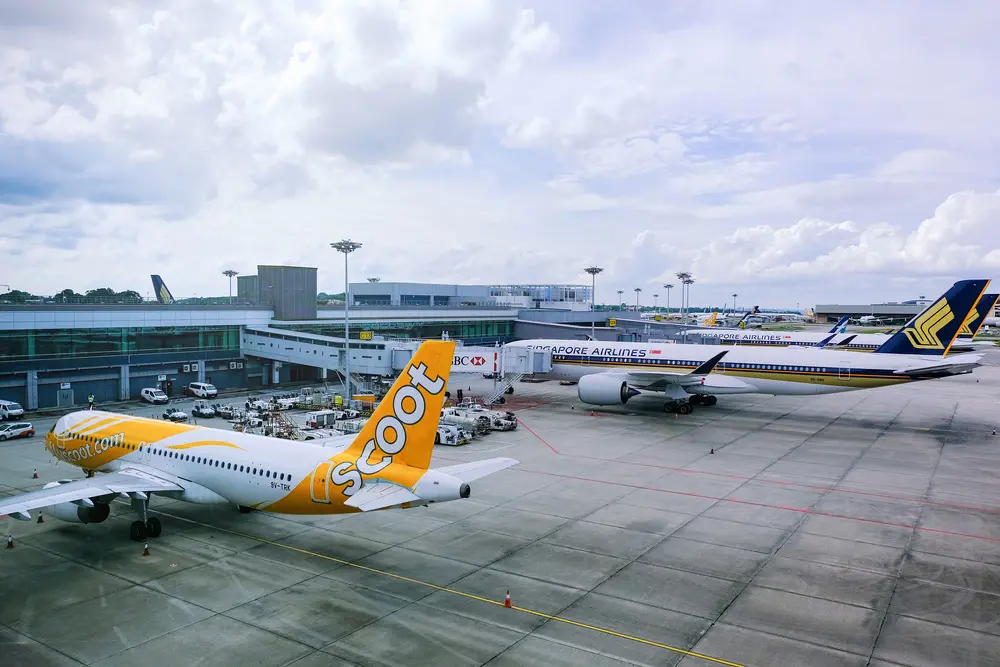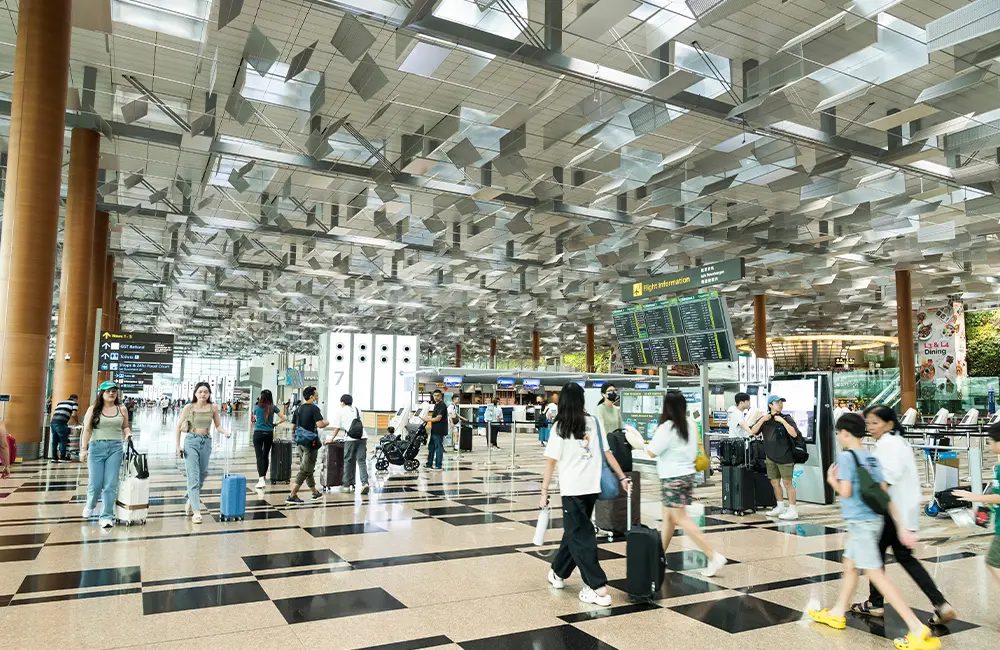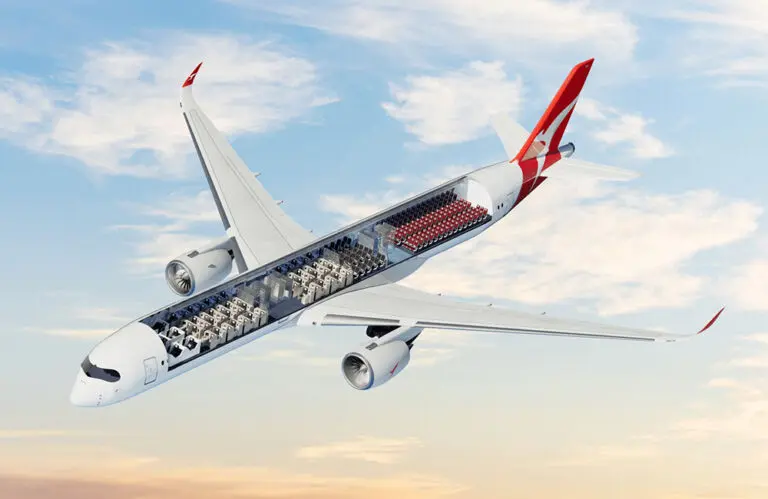Travellers flying out of Singapore will soon help pay for the transition to greener aviation, under a new fuel levy that makes the city-state the first country to introduce a passenger charge for sustainable aviation fuel (SAF).
From 2026, the Civil Aviation Authority of Singapore (CAAS) will apply a green levy on all departing flights from Singapore’s airports, primarily Changi Airport and Seletar Airport, designed to fund a target of making SAF account for 1 per cent of all jet fuel used in Singapore in 2026.
The green aviation levy in Singapore takes effect for tickets sold from 1 April 2026 and applies to departing flights from 1 October 2026.
The cost of the green levy will vary by flight distance and class of travel, with estimates for economy-class passengers ranging from around S$3 (AU$3.60) for short-haul flights up to S$16 (AU$19) for long-haul flights.
The green fuel levy will also include an additional S$1 (AU$1.20) for trips to Southeast Asia and S$10.40 (AU$12) for flights to the Americas.
According to the CAAS, Business and first-class travellers will, however, pay four times more, peaking at around S$41.60 (AU$49) per sector.
Transit or transfer passengers (those just connecting through Singapore) will be exempt, to help preserve Changi’s competitive role as a global hub.
What does this mean for Australian travellers and the trade?

Australia’s proximity and strong air links with Singapore mean many travellers will soon see the green levy added to outbound fares. It also affects Australians booking Singapore-originating multi-leg trips or repositioning flights.
For corporate travel managers, the levy adds a tangible cost to emissions reduction, one that may complement corporate sustainability reporting. For leisure travellers, it reflects the growing reality that decarbonising air travel will come with a price tag.
And for travel sellers, while this isn’t a big cost hike in most instances, it represents a meaningful shift in how sustainable travel is framed at the point of sale, from abstract offsetting to a visible investment in cleaner fuels.
For travel sellers and agents, this means fares out of Singapore will carry a new visible cost element. The levy will appear as a separate surcharge on tickets.
It also offers a clear “green” value proposition: the surcharge is specifically funding SAF use, which is one of the practical, if not controversial, pathways aviation is using to reduce carbon emissions. This provides agents with a talking point when selling Singapore-departure seats, especially for environmentally conscious travellers or corporate clients with travel sustainability policies.
Finally, agents selling multi‑leg itineraries involving Singapore should check whether the levy applies for the relevant portion of the journey (i.e., if the ticket originates in Singapore) and how the fare is displayed. Some clients may not expect a separate “green tax” on their invoice.
What’s the context behind the levy?

Singapore has made SAF central to its decarbonisation roadmap for aviation, and the new levy creates both demand and funding certainty. The government has committed to reviewing levy rates and SAF targets regularly as the fuel becomes more available and affordable.
Given Singapore’s limited geographical size, which hinders its ability to develop its own SAF fuel, the broader strategy encompasses developing SAF supply chains in Southeast Asia, supporting research and development (R&D) efforts, and fostering regional cooperation. Singapore’s early-mover status may also offer commercial advantages, potentially attracting green investment and airlines seeking access to SAF.
In the long term, the city-state aims to be a regional SAF hub, connecting Asia-Pacific routes with greener fuel options and incentivising carriers to integrate SAF into more flight plans.
Here in Australia, the SAF sector is gaining momentum, albeit slowly and without any mention of a green levy (yet), led by Qantas, which has committed to using 10 per cent SAF in its fuel mix by 2030 and reaching net zero emissions by 2050.
The airline has sourced SAF for flights from London and Los Angeles and recently joined a global alliance to accelerate local supply. In 2024, Australia welcomed its largest-ever import of SAF to support commercial uptake, and the government announced a $30 million initiative to boost domestic SAF production.
KARRYON UNPACKS: Singapore’s passenger-funded SAF levy marks a new frontier in aviation emissions policy, combining transparency, climate ambition and market signalling in a way that may soon echo across Asia-Pacific airfares.





